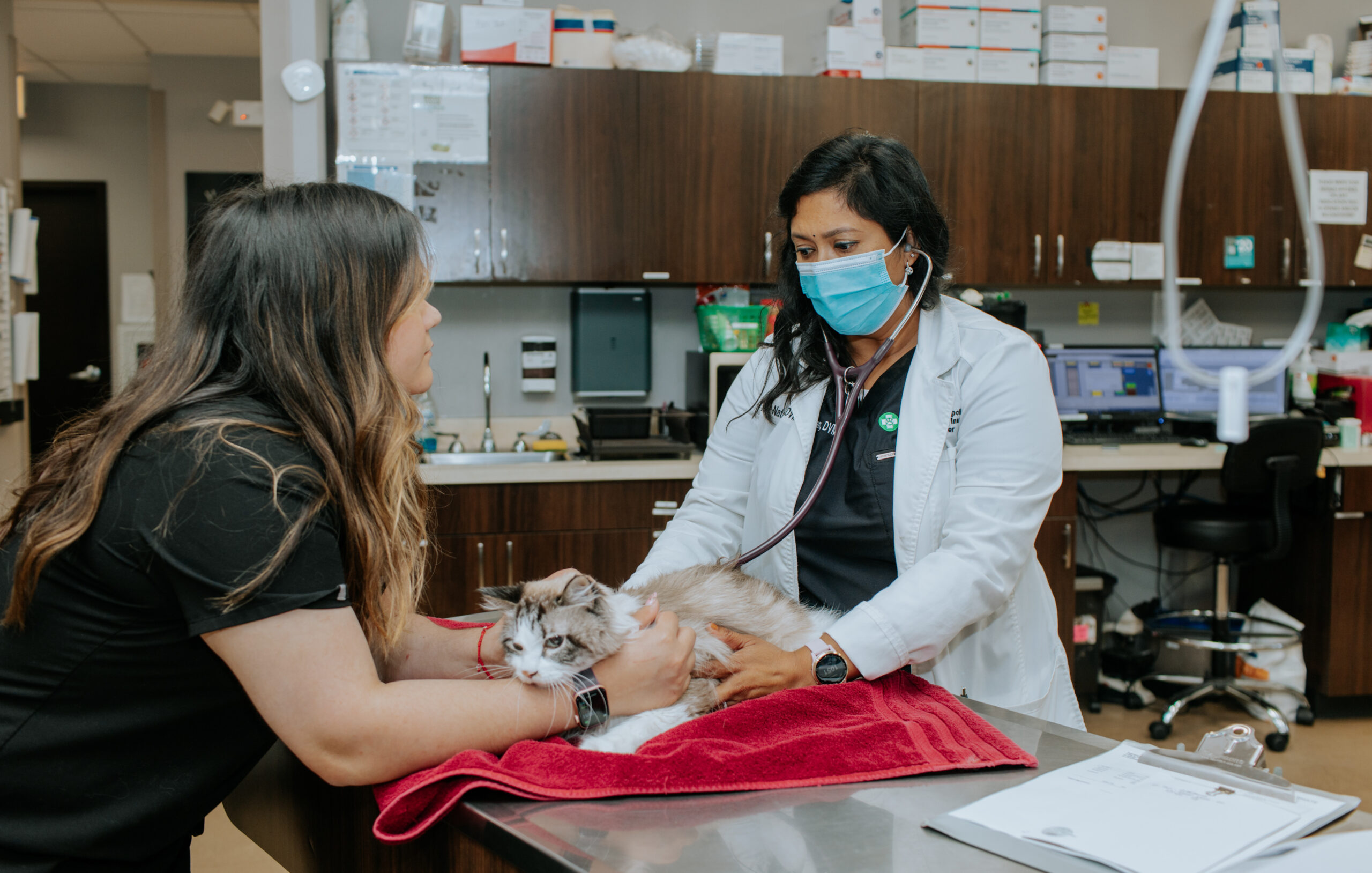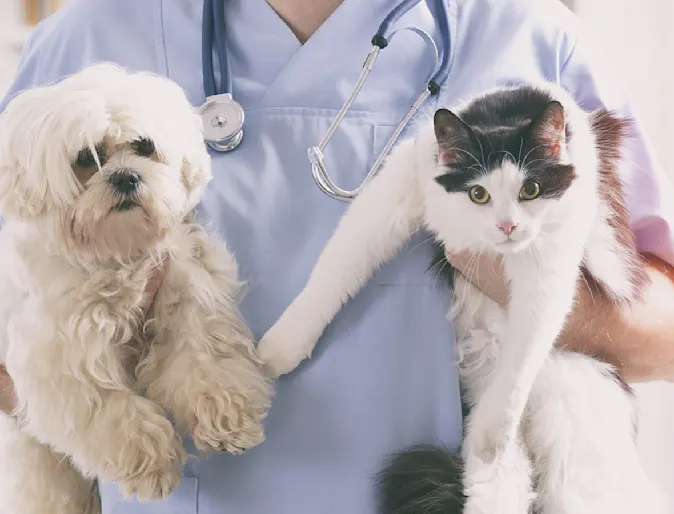What to Expect From Your Visit to animal emergency care bellingham — A Pet Owner’s Guide
What to Expect From Your Visit to animal emergency care bellingham — A Pet Owner’s Guide
Blog Article
Why Animal Rehab Is Important: the Benefits of Vet Providers for Your Animal's Recovery
Animal rehabilitation is a necessary element of recovery for pet dogs dealing with injuries or specials needs. Veterinary solutions provide crucial support through tailored rehab plans that deal with private demands. These strategies frequently include pain monitoring, physical therapy, and nutritional guidance. Comprehending the numerous aspects of pet rehab can illuminate its significance in boosting recovery end results. What specific advantages do these solutions provide, and how can they transform a pet's healing journey?
Comprehending Animal Recovery
Pet recovery incorporates a variety of healing techniques targeted at bring back the health and performance of hurt or handicapped animals. This area incorporates various methods, consisting of physical therapy, hydrotherapy, and job-related therapy, customized to fulfill the certain needs of each pet. Recovery specialists analyze a pet's problem, developing personalized treatment plans that may involve exercises to strengthen muscle mass, boost mobility, and improve general health. The process not only focuses on physical healing but also addresses psychological and behavior elements. Animals frequently experience anxiety and anxiety following an injury, making mental health and wellness factors to consider necessary in recovery. By creating a supportive setting, therapists can aid animals reclaim their confidence and adapt to their new scenarios. Via routine sessions, animals can experience considerable enhancements, inevitably causing a better lifestyle. Generally, understanding pet rehabilitation highlights its importance in advertising recuperation and improving the bond in between pet dogs and their owners.
The Function of Pain Monitoring in Healing
Just how necessary is efficient discomfort management in the recovery of hurt animals? It plays a vital duty in assisting in healing and improving the overall well-being of pet dogs. Correct discomfort monitoring not just reduces pain however also advertises mobility, allowing animals to participate in rehabilitation tasks needed for recovery. When discomfort is successfully managed, animals often tend to react favorably to therapy, leading to quicker rehabilitation outcomes.Veterinarians use various methods to analyze and address discomfort, including medicines, acupuncture, and alternative treatments. By tailoring discomfort management strategies to the private needs of each animal, veterinarians can assure that pet dogs remain calm and cooperative throughout their recovery journey. Furthermore, lessening pain aids minimize anxiety, which can prevent recovery and lengthen recuperation times. To summarize, efficient discomfort management is important for boosting the healing process and improving the high quality of life for damaged pets.
Physical Therapy Techniques for Pets
Countless physical treatment methods are available to help in the rehabilitation of pets recuperating from injuries or surgical treatments (veterinary cardiologist near me). These strategies can improve wheelchair, ease discomfort, and promote healing. Therapeutic workouts, for example, help enhance muscle mass and boost joint feature, allowing animals to restore their physical abilities progressively. Hands-on treatment, which includes massage therapy and mobilization, can relieve tension and boost flow, contributing to a much faster recovery.Other techniques such as easy range of movement workouts motivate joint flexibility and decrease stiffness. Furthermore, electrical stimulation treatment may be employed to boost nerves and muscle mass, promoting healing and pain relief.Veterinary experts commonly tailor these strategies to each pet's certain needs, making sure a complete rehab plan. By applying these physical treatment techniques, animals can experience improved high quality of life and a more effective healing from their ailments. The combination of these practices into rehab programs is crucial for optimal healing end results
Benefits of Hydrotherapy for Rehabilitation
Hydrotherapy provides considerable advantages in pet rehabilitation, particularly in enhancing mobility. This water-based treatment promotes discomfort alleviation while offering convenience to injured or recouping family pets. In addition, it promotes strength-building exercises that add to overall physical healing.
Boosted Mobility Enhancement
As pets recover from injuries or surgical treatments, boosted wheelchair frequently comes to be a primary goal of their recovery. Hydrotherapy acts as an important device in accomplishing this goal. With water-based workouts, animals can participate in low-impact movements that promote joint wheelchair and strengthen muscular tissues without the tension of weight-bearing activities. The buoyancy of water sustains their bodies, enabling increased series of activity and flexibility renovation. In addition, hydrotherapy encourages far better balance and control, which are necessary for bring back regular activity patterns. Normal sessions can result in significant progression in a pet's physical capabilities, inevitably improving their lifestyle. This strategy not just aids in recuperation but additionally advertises a much more energetic and fulfilling way of living post-rehabilitation.
Discomfort Relief and Comfort

Relief from discomfort is a vital facet of animal recovery, and hydrotherapy considerably adds to this procedure. By utilizing water's buoyancy, hydrotherapy minimizes joint stress and reduces pain during movement. This therapeutic technique provides a relaxing setting where animals can participate in mild exercises without the complete weight of their bodies influencing their healing. The cozy water boosts blood circulation, promoting recovery while additionally encouraging leisure. Additionally, hydrotherapy sessions can be customized to fulfill the particular demands of the animal, guaranteeing optimal convenience. As pet dogs experience lowered pain and enhanced comfort levels, their overall readiness find more information to take part in recovery tasks typically improves, causing an extra effective healing trip. Subsequently, hydrotherapy acts as a critical tool in enhancing discomfort relief and comfort during recovery.
Strength Building Workouts
Strength-building workouts play a necessary function in the rehabilitation process, with hydrotherapy offering one-of-a-kind advantages. This type of treatment uses water resistance to enhance muscular tissue stamina without putting excessive pressure on the joints. The buoyancy of water sustains the family pet's weight, permitting more secure motion and raised variety of movement. Furthermore, hydrotherapy can enhance cardio health and wellness and advertise total health and fitness, helping in much faster recovery from injuries or surgical treatments. The regulated environment additionally minimizes the risk of reinjury, making it a perfect option for family pets requiring rehabilitation. Regular hydrotherapy sessions can lead to recognizable enhancements in mobility, stamina, and endurance, inevitably enhancing the family pet's high quality of life and capability to return to normal tasks.
Significance of Customized Rehabilitation Strategies
Customized rehabilitation plans are essential for attending to the one-of-a-kind demands of each pet, making certain customized therapy techniques. These strategies permit efficient progression tracking and required modifications, cultivating perfect recovery results. Furthermore, an alternative technique can improve the overall health of the pet, advertising an extra detailed recovery experience.
Individualized Treatment Approaches
While many rehabilitation programs take on a one-size-fits-all approach, the special needs of each animal require individualized treatment strategies for ideal healing. Customized rehabilitation plans consider various aspects, including the pet's species, age, medical history, and specific injuries or conditions. By customizing interventions, vets can deal with each family pet's special challenges, making the most of the performance of the rehabilitation procedure. Embellished plans might integrate various modalities such as physical treatment, hydrotherapy, and healing exercises, making certain that the treatment straightens with the pet's capabilities and development. Additionally, tailored approaches foster a more powerful bond in between the pet and the caregiver, promoting a much more appealing and encouraging healing environment. Ultimately, customized treatment is important for accomplishing best feasible outcomes in animal recovery.
Progress Monitoring and Adjustments

Holistic Recuperation Strategies
Holistic recuperation techniques are crucial for effective animal recovery, as they emphasize the value of individualized therapy strategies tailored to each animal's details demands. This method considers the physical, psychological, and environmental variables impacting recuperation. Custom-made rehabilitation plans might include a combination of physical therapy, dietary therapy, and behavioral modifications. By addressing these varied facets, veterinarians can improve the total health of the pet and advertise a quicker recuperation. Such customized strategies help with a much deeper understanding of the pet dog's special challenges, leading to much more effective interventions. Ultimately, all natural recovery strategies not only enhance physical health but also add to the pet's mental and emotional security, making sure a thorough rehab experience.
The Impact of Nutrition on Recuperation
Nourishment plays a vital function in the healing procedure for restoring animals, commonly establishing the speed and effectiveness of healing. A healthy diet regimen offers the necessary nutrients that support cells repair, improve the body immune system, and enhance general vitality. Healthy protein is specifically crucial, as it helps in muscle rebuilding and recovery from injuries. Essential fatty acids, vitamins, and minerals also contribute to minimizing swelling and promoting ideal cellular function.Veterinarians often emphasize the importance of tailored nutrition strategies, considering each animal's certain demands, age, and health and wellness standing. Appropriate hydration is just as important, as liquids promote nutrition absorption and help in cleansing. By making certain that pet dogs get proper nourishment, caretakers can significantly improve their opportunities of an effective healing, resulting in much better long-term wellness results. Inevitably, nutrition works as a fundamental aspect in the rehabilitation journey, supporting animals in restoring toughness and resilience post-injury or ailment.
Success Stories: Family Pets Who Thrived After Rehabilitation
Successful rehab tales abound, showcasing the durability of family pets who have overcome substantial difficulties. Take, for circumstances, Bella, a golden retriever who suffered serious injuries from an automobile mishap. With dedicated veterinary treatment and a complete recovery program, she restored her flexibility and returned to her playful self, much to her proprietor's delight. Max, an elderly feline identified with joint inflammation, experienced amazing renovation through a mix of physical treatment and discomfort administration. His newly found dexterity permitted him to enjoy his favorite sunbathing places once more. Another motivating situation is that of Coco, a rescued greyhound who overcame anxiousness through behavior alteration and socializing techniques, allowing her to prosper in her new home. These success tales exemplify the transformative power of pet recovery, highlighting that with the ideal support, family pets can not just recover however lead satisfying lives, improving the bonds they show to their family members.
Often Asked Concerns
How Long Does the Recovery Process Generally Take for Pets?
The rehabilitation process for animals generally varies based upon the injury or problem, ranging from a couple of weeks to several months. Specific development, therapy type, and commitment to exercises considerably affect the general duration of recovery.
Exist Any Dangers Connected With Animal Recovery?
Pet rehab may carry dangers such as exacerbation of injuries, improper methods leading to pain, or insufficient tracking during healing. These factors can impede progress and impact the total performance of the rehab procedure.

Can All Pets Gain From Recovery Providers?
Not all animals may call for recovery, but several can benefit significantly. Recovery services can improve wheelchair, relieve discomfort, and enhance total wellness, specifically for those recovering from injuries, surgical procedures, or persistent problems.
Just How Can I Prepare My Animal for Rehabilitation Sessions?

What Indications Suggest My Animal Demands Rehabilitation?
Indicators suggesting an animal might require recovery include problem walking, limping, lowered task levels, hesitation to leap, or signs of discomfort. Observing these habits can motivate owners to look for specialist assessment and therapy for their animals.
Report this page